- Home
- Kurt Vonnegut
Bluebeard Page 19
Bluebeard Read online
Page 19
"So, sitting in front of a fire in the kitchen fireplace, with all the heat going up the flue instead of coming out in the room," I said, "Dorothy read in an art magazine what an Italian sculptor had said about the first Abstract Expressionist paintings ever to be shown in a major show in Europe--at the Venice Biennale in 1950, the same year I had my reunion with Marilee."
"You had a painting there?" said Circe.
"No," I said. "It was just Gorky and Pollock and de Kooning. And this Italian sculptor, who was supposedly very important back then, but who is all but forgotten now, said this about what we thought we were up to: 'These Americans are very interesting. They dive into the water before they learn to swim.' He meant we couldn't draw.
"Dorothy picked up on that right away. She wanted to hurt me as much as I had hurt her, so she said, 'So that's it! You guys all paint the way you do because you couldn't paint something real if you had to.'
"I didn't rebut her with words. I snatched a green crayon Dorothy had been using to make a list of all the things inside and outside the house that had to be repaired, and I drew portraits on the kitchen wall of our two boys, who were asleep in front of the fireplace in the living room. I just did their heads--life size. I didn't even go into the living room to look at them first. The wall was new Sheetrock which I had nailed over the cracked plaster. I hadn't got around to filing and taping the joints between the sheets yet, and covering the nailheads. I never would.
"Dorothy was flabbergasted," I said to Circe. "She said to me: 'Why don't you do that all the time?' And I said to her, and this was the first time I ever said 'fuck' to her, no matter how angry we might have been with each other: 'It's just too fucking easy.'"
"You never did fill in the joints between the Sheetrock?" said Mrs. Berman.
"That is certainly a woman's question," I said. "And my manly answer is this one: 'No, I did not.'"
"So what happened to the portraits?" she said. "Were they painted over?"
"No," I said. "They stayed there on the Sheetrock for six years. But then I came home half drunk one afternoon, and found my wife and children and the pictures gone, and a note from Dorothy saying they were gone forever. She had cut the pictures out of the Sheetrock and taken them with her. There were two big square holes where the pictures used to be."
"You must have felt awful," said Mrs. Berman.
"Yes," I said. "Pollock and Kitchen had killed themselves only a few weeks before that, and my own paintings were falling apart. So when I saw those two squares cut out of the Sheetrock in that empty house--" I stopped. "Never mind," I said.
"Finish the sentence, Rabo," she begged.
"That was as close as I'll ever be," I said, "to feeling what my father must have felt when he was a young teacher--and found himself all alone in his village after the massacre."
Slazinger was another one who had never seen me draw, who wondered if I could really draw. I had been living out here for a couple of years by then, and he came by to watch me paint in the potato barn. I had set up a stretched and primed canvas eight by eight feet, and was about to lay on a coat of Sateen Dura-Luxe with a roller. It was a shade of greenish burnt orange called "Hungarian Rhapsody." Little did I know that Dorothy, back at the house, was slathering our whole bedroom with "Hungarian Rhapsody." But that is another story.
"Tell me, Rabo--" said Slazinger, "if I put on that same paint with that same roller, would the picture still be a Karabekian?"
"Absolutely," I said, "provided you have in reserve what Karabekian has in reserve."
"Like what?" he said.
"Like this," I said. There was dust in a pothole in the floor, and I picked up some of it on the balls of both my thumbs. Working both thumbs simultaneously, I sketched a caricature of Slazinger's face on the canvas in thirty seconds.
"Jesus!" he said. "I had no idea you could draw like that!"
"You're looking at a man who has options," I said.
And he said: "I guess you do, I guess you do."
I covered up that caricature with a couple of coats of "Hungarian Rhapsody," and laid on tapes which were supposed to be pure abstraction, but which to me were secretly six deer in a forest glade. The deer were near the left edge. On the right was a red vertical band, which to me, again secretly, was the soul of a hunter drawing a bead on one of them. I called it "Hungarian Rhapsody Number Six," which was bought by the Guggenheim Museum.
That picture was in storage when it started to fall apart like all the rest of them. A woman curator just happened to walk by and see all this tape and flakes of Sateen Dura-Luxe on the floor, so she called me up to ask what could be done to restore the picture, and whether they might be at fault someway. I didn't know where she had been the past year, when my pictures had become notorious for falling apart everywhere. She honestly thought maybe the Guggenheim hadn't provided proper humidity controls or whatever. I was at that time living like an animal in the potato barn, friendless and unloved. But I did have a telephone.
"One very strange thing--" she went on, "this big face has emerged from the canvas." It was the caricature, of course, which I had drawn with filthy thumbs.
"You should notify the Pope," I said.
"The Pope?" she said.
"Yes," I said. "You may have the next best thing to the Shroud of Turin."
I had better explain to young readers that the Shroud of Turin is a linen sheet in which a dead person has been wrapped, which bears the imprint of an adult male who has been crucified, which the best scientists of today agree may indeed be two thousand years old. It is widely believed to have swaddled none other than Jesus Christ, and is the chief treasure of the Cathedral of San Giovanni Battista in Turin, Italy.
My joke with the lady at the Guggenheim suggested that it might be the face of Jesus emerging from the canvas--possibly just in time to prevent World War Three.
But she topped my joke. She said, "Well--I would call the Pope right away, except for one thing."
"What's that?" I said.
And she said: "You happen to be talking to somebody who used to date Paul Slazinger."
I made her the same offer I had made everybody else: that I would duplicate the painting exactly in more durable materials, paints and tapes which really would outlive the smile on the "Mona Lisa."
But the Guggenheim, like everybody else, turned me down. Nobody wanted to spoil the hilarious footnote I had become in art history. With a little luck, my last name might actually find its way into dictionaries:
kar*a*bek*i*an (), n. (from Rabo Karabekian, U.S. 20th cent painter). Fiasco in which a person causes total destruction of own work and reputation through stupidity, carelessness or both.
34
WHEN I REFUSED to draw a picture for Mrs. Berman, she said, "Oh--you are such a stubborn little boy!"
"I am a stubborn little old gentleman," I said, "clinging to his dignity and self-respect as best he can."
"Just tell me what kind of thing it is in the barn--" she wheedled, "animal, vegetable or mineral?"
"All three," I said.
"How big?" she said.
I told her the truth: "Eight feet high and sixty-four feet long."
"You're kidding me again," she surmised.
"Of course," I said.
Out in the barn were eight panels of primed and stretched canvas placed side by side, each one eight feet by eight feet. They formed, as I had told her, a continuous surface sixty-four feet long. They were held upright in back by two-by-fours, and ran like a fence down the middle of the potato barn. These were the same panels which had shed the paint and tape of what had been my most famous and then most infamous creation, the picture which had graced and then disgraced the lobby of the GEFFCo headquarters on Park Avenue: "Windsor Blue Number Seventeen."
Here is how they came back into my possession, three months before dear Edith died:
They were found entombed in a locked chamber in the bottommost of the three basement floors under the Matsumoto Building, formerly the
GEFFCo Building. They were recognized for what they were, with shreds of Sateen Dura-Luxe clinging to them here and there, by an inspector from Matsumoto's insurance company, who was looking for fire hazards deep underground. There was a locked steel door, and nobody had any idea what was on the other side.
The inspector got permission to break in. This was a woman and, as she told me on the telephone: she was the first female safety inspector for her company, and also the first black. "I am two birds with one stone," she said, and she laughed. She had a very nice laugh. There was no malice or mockery in it. In offering to return my canvases to me after all those years, with the absent-minded approval of Matsumoto, she was simply expressing her reluctance to see anything go to waste.
"I'm the only one who cares one way or another," she said, "so you tell me what to do. You'd have to pick them up yourself," she said.
"How did you know what they were?" I said.
She had been a prenursing student at Skidmore College, she said, and had taken, as one of her precious few electives, a course in art appreciation. She was a registered nurse like my first wife Dorothy, but had given up that profession because doctors, she said, treated her like an idiot and a slave. Also: the hours were long and the pay was low, and she had an orphaned niece to support and keep company.
Her art appreciation teacher showed slides of famous pictures, and two of these were of "Windsor Blue Number Seventeen," before and after it fell apart.
"How can I thank him?" I said.
"I think he was trying to lighten up the course," she said. "The rest of it was so serious."
"Do you want the canvases or not?" she said. There was a long silence, so she finally said, "Hello? Hello?"
"Sorry," I said. "That may seem like a simple question to you, but it's a biggie to me. To me it's as though you called me up out of the blue on a day like any other day, and asked me if I was grown up yet."
If harmless objects like those rectangles of stretched canvas were hobgoblins to me, could fill me with shame, yes, with rage at a world which had entrapped me into being a failure and a laughingstock and so on, then I wasn't a grown-up yet, although I was then sixty-eight years old.
"So what is your answer?" she said on the telephone.
"I'm waiting myself to hear it," I said. I had no use for the canvases--or so I thought back then. I honestly never expected to paint again. Storing them would be no problem, since there was plenty of space in the potato barn. Could I sleep well here with the worst of the embarrassments from my past right here on the property? I hoped so.
I heard myself say this at last: "Please--don't throw them away. I will call Home Sweet Home Moving and Storage out here, and have them picked up as soon as possible. Please tell me your name again--so they can ask for you."
And she said this: "Mona Lisa Trippingham."
When GEFFCo hung "Windsor Blue Number Seventeen" in its lobby, with fanfare about such an old company's keeping on top of the latest developments not only in technology but in the arts, the company's publicity people hoped to say that "Windsor Blue Number Seventeen" was superlative in terms of size--if not the largest painting in the world, then at least the largest painting in New York City, or whatever. But there were several murals right in the city, and God knows in the world, which easily exceeded my painting's 512 square feet.
The publicity people wondered if it might not be a record holder for a painting hung on a wall--ignoring the fact that it was in fact eight separate panels, mated in back with C-clamps. But that wouldn't do, either, since it turned out that the Museum of the City of New York had three continuous paintings on canvas, stitched together to be sure, as high as mine and a third again as long! They were curious artifacts--an early effort at making movies, you might say, since they had rollers at either end. They could be unwound from one and rewound on the other. An audience could see only a small part of the whole at any time. These Brobdingnagian ribbons were decorated with mountains and rivers and virgin forests and limitless grasslands on which buffalo grazed, and deserts where diamonds or rubies or gold nuggets might be had for the stooping. These were the United States of America.
Lecturers traveled all over Northern Europe with such pictures in olden times. With assistants to unroll one end and roll up the other, they urged all ambitious and able persons to abandon tired old Europe and lay claim to rich and beautiful properties in the Promised Land, which were practically theirs for the asking.
Why should a real man stay home when he could be raping a virgin continent?
I had the eight panels purged of every trace of faithless Sateen Dura-Luxes, and restretched and reprimed. I had them set up in the barn, dazzling white in their restored virginity, just as they had been before I transmuted them into "Windsor Blue Number Seventeen."
I explained to my wife that this eccentric project was an exorcism of an unhappy past, a symbolic repairing of all the damage I had done to myself and others during my brief career as a painter. That was yet another instance, though, of putting into words what could not be put into words: why and how a painting had come to be.
The long and narrow barn, a century old, was as much a part of it as all that white, white, white.
The powerful floodlights dangling from tracks on the ceiling were part of it, pouring megawatts of energy into all that white sizing, making it far whiter than I would have believed white could ever be. I had caused those artificial suns to be installed when I received the commission to create "Windsor Blue Number Seventeen.
"What are you going to do with it next?" dear Edith asked.
"It's done," I said.
"Are you going to sign it?" she said.
"That would spoil it," I replied. "A flyspeck would spoil it."
"Does it have a title?" she said.
"Yes," I said, and I gave it a title on the spot, one as long as the title Paul Slazinger had given his book on successful revolutions: "I Tried and Failed and Cleaned Up Afterwards, so It's Your Turn Now."
I had my own death in mind--and what people would say about me afterwards. That was when I first locked up the barn, but with only a single padlock and hasp. I assumed, as my father had and as most husbands do, that I would of course be the first of our pair to die. So I had whimsically self-pitying instructions for Edith as to what she was to do immediately following my burial.
"Hold my wake in the barn, Edith," I said, "and when people ask you about all the white, white, white, you tell them that it was your husband's last painting, even though he didn't paint it. And then you tell them what the title is."
But she died first, and only two months after that. Her heart stopped, and down she fell into a flower bed.
"No pain," the doctor said.
At her burial at noon in Green River Cemetery, in a grave only a few yards from those of the other two Musketeers, Jackson Pollock and Terry Kitchen, I had my strongest vision yet of human souls unencumbered, unembarrassed by their unruly meat. There was this rectangular hole in the ground, and standing around it were all these pure and innocent neon tubes.
Was I crazy? You bet.
Her wake was in the home of a friend of hers, not mine, a mile up the beach from here. The husband did not attend!
Nor did he reenter this house, where he had been so useless and contented and loved without reason for one third of his life and one quarter of the twentieth century.
He went out to the barn, unlocked the sliding doors and turned on the lights. He stared at all that white.
Then he got into his Mercedes and drove to a hardware store in East Hampton, which carried art supplies. I bought everything a painter could ever wish for, save for the ingredient he himself would have to supply: soul, soul, soul.
The clerk was new to the area, and so did not know who I was. He saw a nameless old man in a shirt and tie and a suit made to order by Izzy Finkelstein--and a patch over one eye. The cyclops was in a high state of agitation.
"You're a painter, are you, sir?" said the clerk. He was perhaps
twenty years old. He hadn't even been born when I stopped painting, stopped making pictures of any kind.
I spoke one word to him before leaving. This was it: "Renaissance."
The servants quit. I had become an untamed old raccoon again, who spent all his life in and around the potato barn. I kept the sliding doors closed, so that nobody could see what it was that I did in there. I did it for six months!
When I was done, I bought five more locks and hasps for the sliding doors, and snapped them shut. I hired new servants, and had a lawyer draw up a new will, which stipulated, as I have said, that I be buried in my Izzy Finkelstein suit, that all I owned was to go to my two sons, provided that they did a certain thing in memory of their Armenian ancestors, and that the barn was not to be unlocked until after my burial.
My sons have done quite well in the world, despite the horrors of their childhood. As I've said, their last name now is that of their good stepfather. Henri Steel is a civilian contract compliance officer at the Pentagon. Terry Steel is a publicity man for the Chicago Bears, which, since I own a piece of the Cincinnati Bengals, makes us sort of a football family.
Having done all that, I found I was able to take up residence in this house again, to hire new servants, and to become the empty and peaceful old man to whom Circe Berman addressed this question on the beach four months ago: "Tell me how your parents died."
On her last night in the Hamptons, she now said to me: "Animal, vegetable and mineral? All three?"
"Word of honor," I said. "All three, all three." With colors and binders taken from creatures and plants and the ground beneath us, every painting was surely all three, all three.
"Why won't you show it to me?" she said.
"Because it is the last thing I have to give to the world," I said. "I don't want to be around when people say whether it is any good or not."

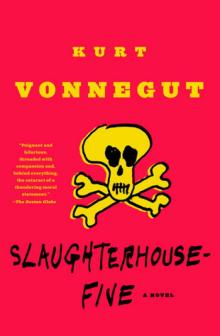 Slaughterhouse-Five
Slaughterhouse-Five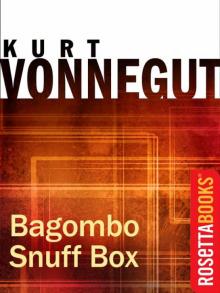 Bagombo Snuff Box: Uncollected Short Fiction
Bagombo Snuff Box: Uncollected Short Fiction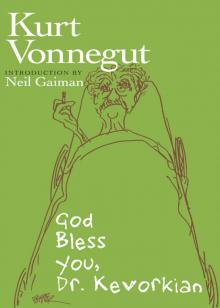 God Bless You, Dr. Kevorkian
God Bless You, Dr. Kevorkian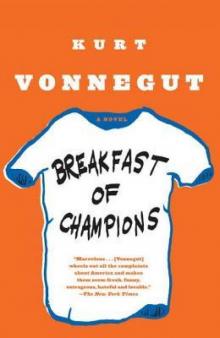 Breakfast of Champions
Breakfast of Champions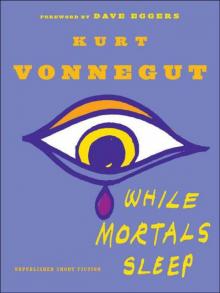 While Mortals Sleep: Unpublished Short Fiction
While Mortals Sleep: Unpublished Short Fiction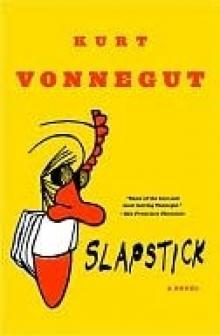 Slapstick or Lonesome No More!
Slapstick or Lonesome No More!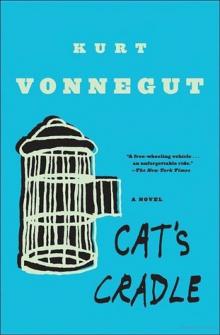 Cat's Cradle
Cat's Cradle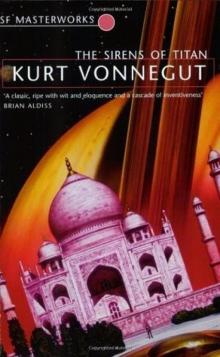 The Sirens of Titan
The Sirens of Titan A Man Without a Country
A Man Without a Country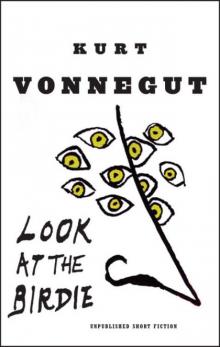 Look at the Birdie: Unpublished Short Fiction
Look at the Birdie: Unpublished Short Fiction Bluebeard
Bluebeard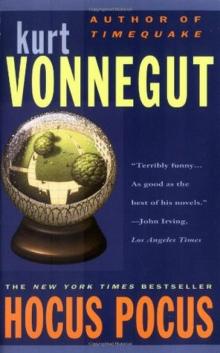 Hocus Pocus
Hocus Pocus The Big Trip Up Yonder
The Big Trip Up Yonder Palm Sunday: An Autobiographical Collage
Palm Sunday: An Autobiographical Collage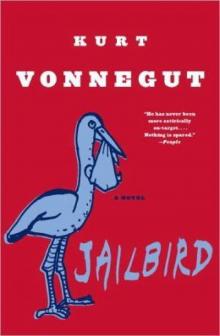 Jailbird
Jailbird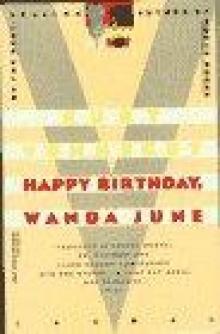 Happy Birthday, Wanda June
Happy Birthday, Wanda June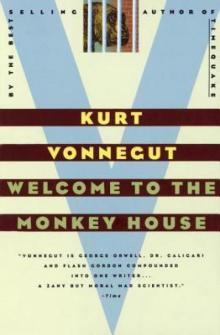 Welcome to the Monkey House
Welcome to the Monkey House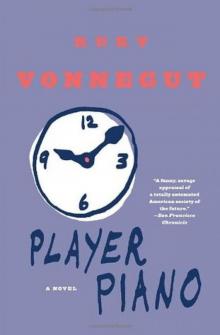 Player Piano
Player Piano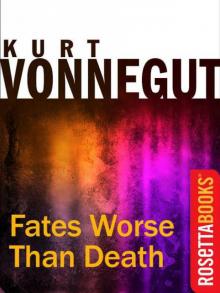 Fates Worse Than Death: An Autobiographical Collage
Fates Worse Than Death: An Autobiographical Collage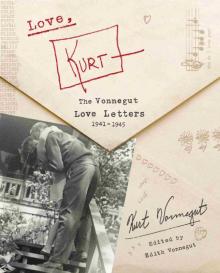 Love, Kurt
Love, Kurt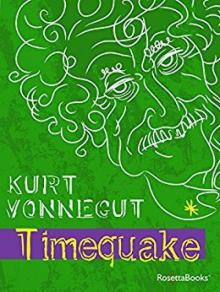 Timequake
Timequake God Bless You, Mr. Rosewater
God Bless You, Mr. Rosewater 2 B R 0 2 B
2 B R 0 2 B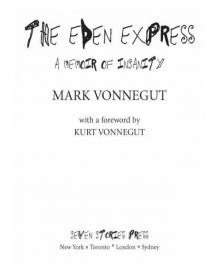 The Eden Express: A Memoir of Insanity
The Eden Express: A Memoir of Insanity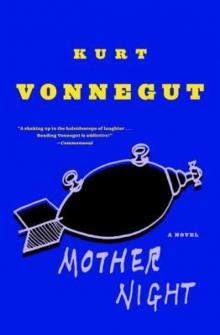 Mother Night
Mother Night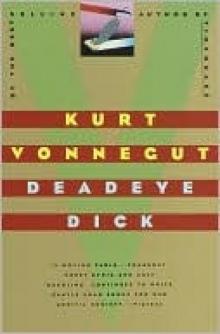 Deadeye Dick
Deadeye Dick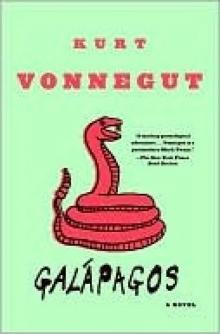 Galápagos
Galápagos Palm Sunday
Palm Sunday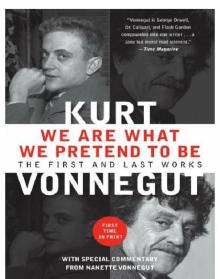 We Are What We Pretend to Be
We Are What We Pretend to Be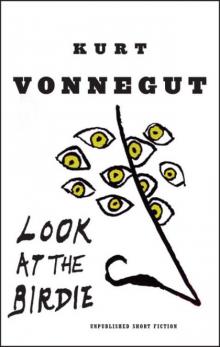 Look at the Birdie
Look at the Birdie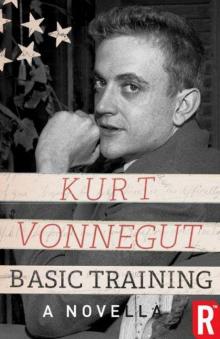 Basic Training
Basic Training Armageddon in Retrospect
Armageddon in Retrospect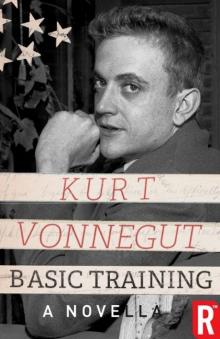 Basic Training (Kindle Single)
Basic Training (Kindle Single)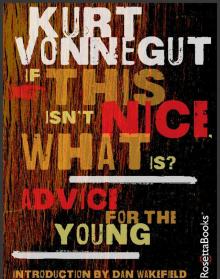 If This Isn't Nice, What Is?
If This Isn't Nice, What Is?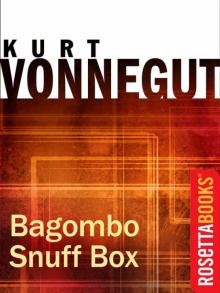 Bagombo Snuff Box
Bagombo Snuff Box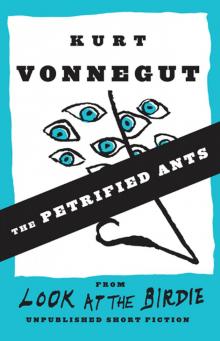 The Petrified Ants
The Petrified Ants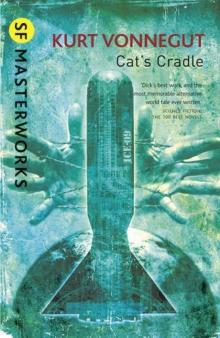 Cat's Cradle: A Novel
Cat's Cradle: A Novel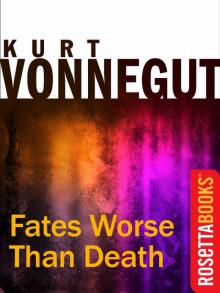 Fates Worse Than Death: An Autobiographical Collage (Kurt Vonnegut Series)
Fates Worse Than Death: An Autobiographical Collage (Kurt Vonnegut Series)